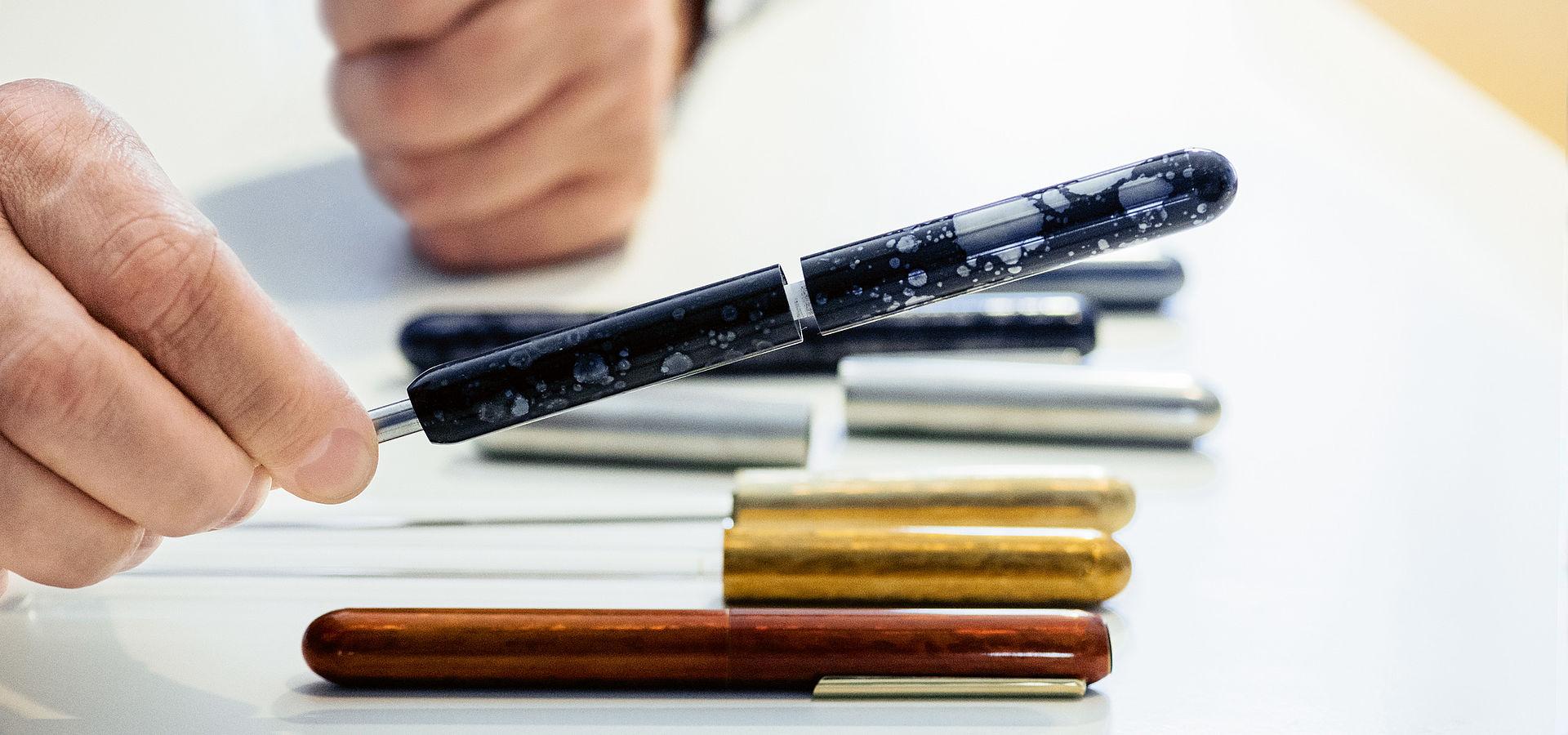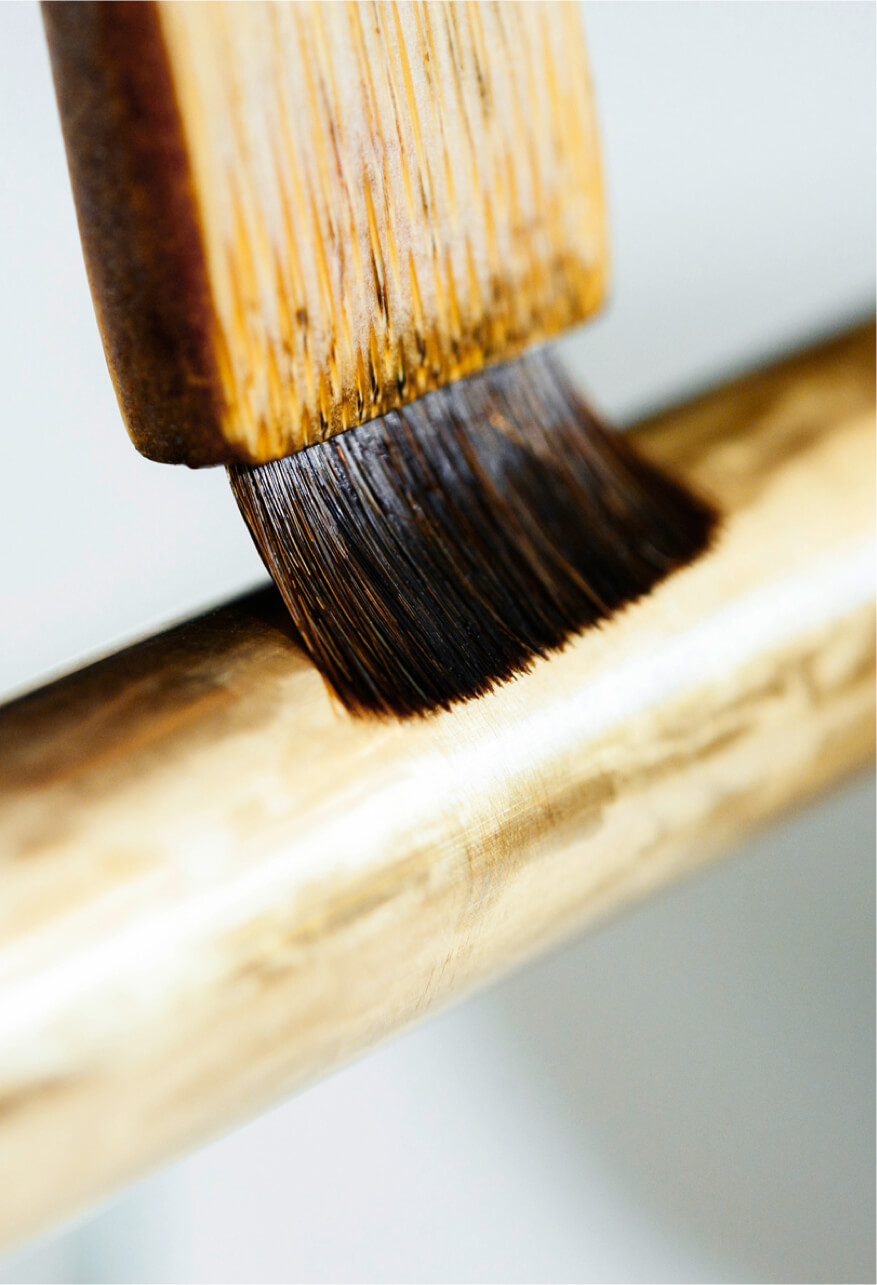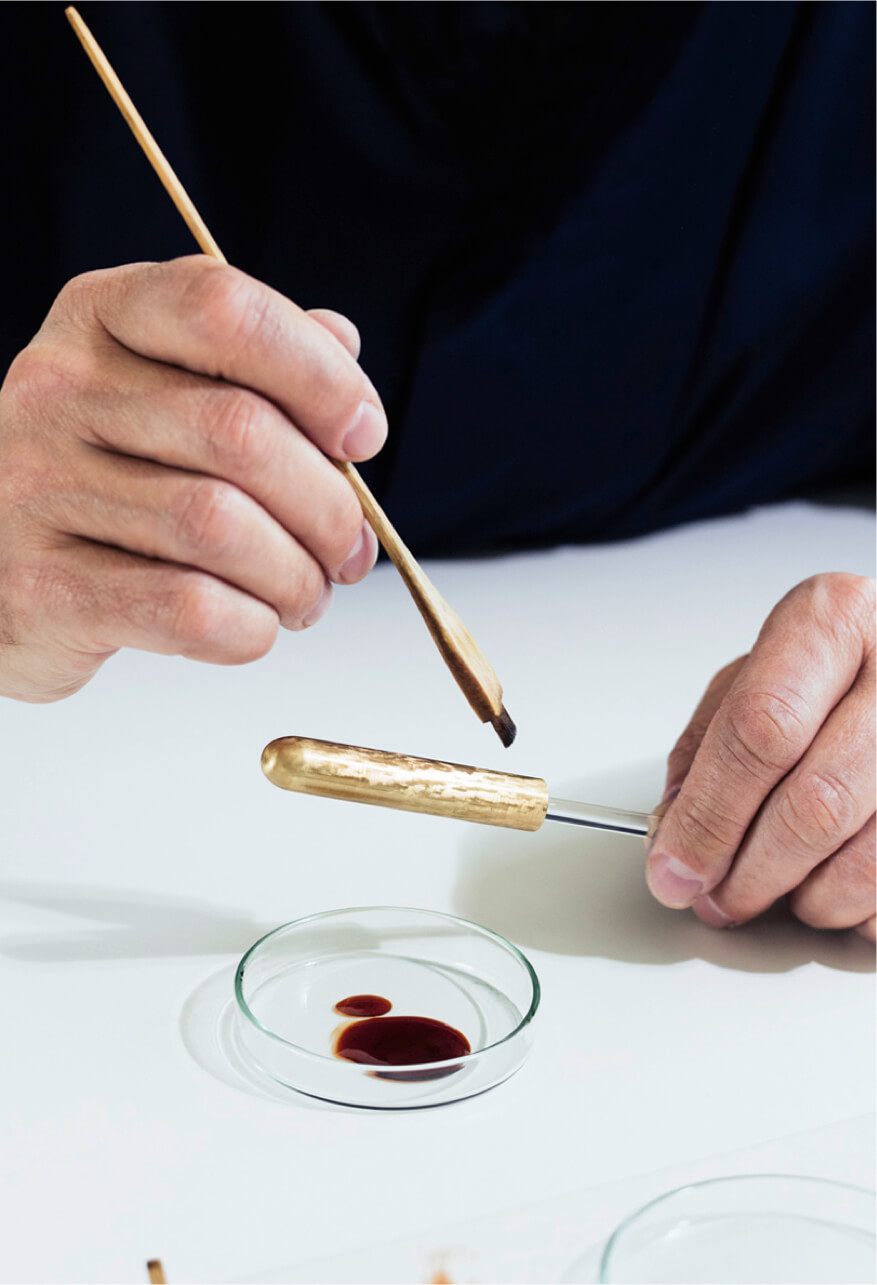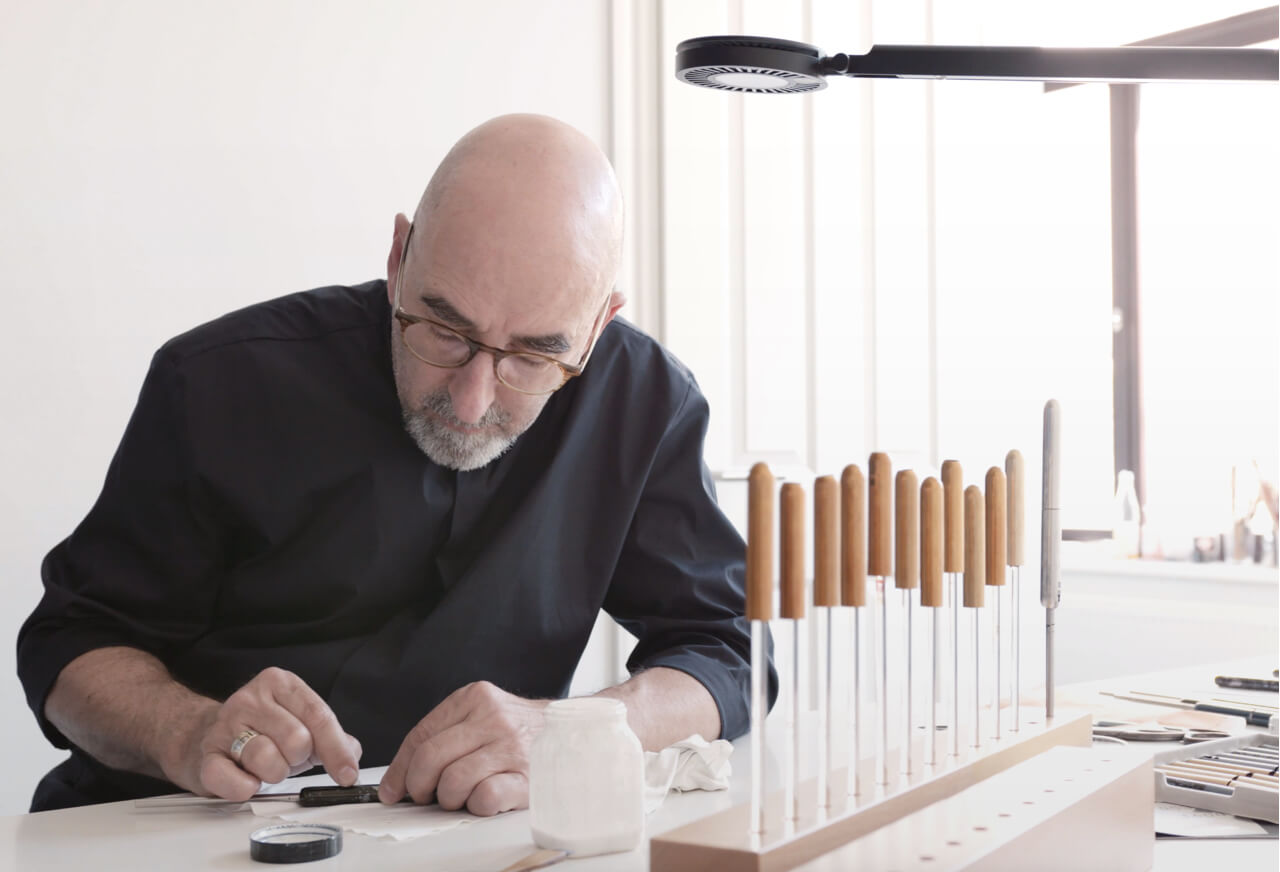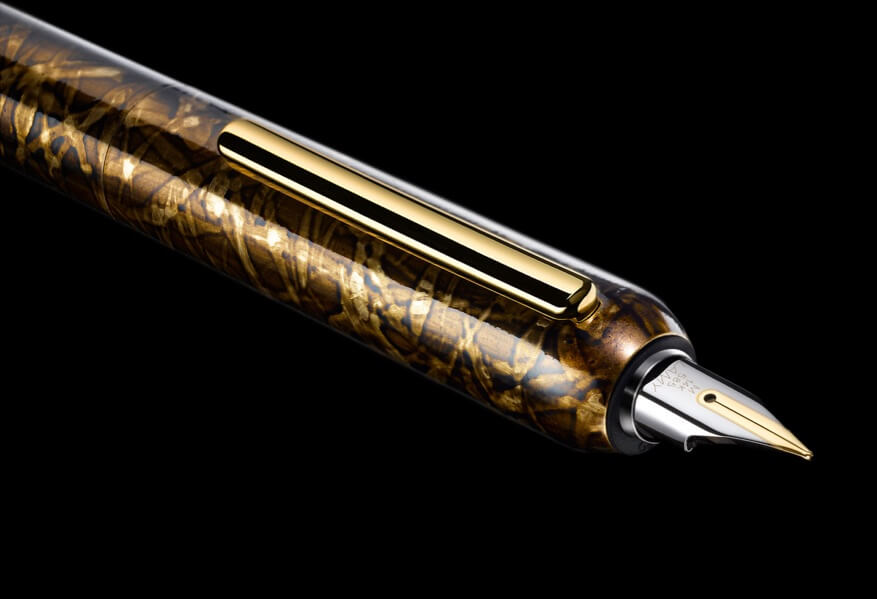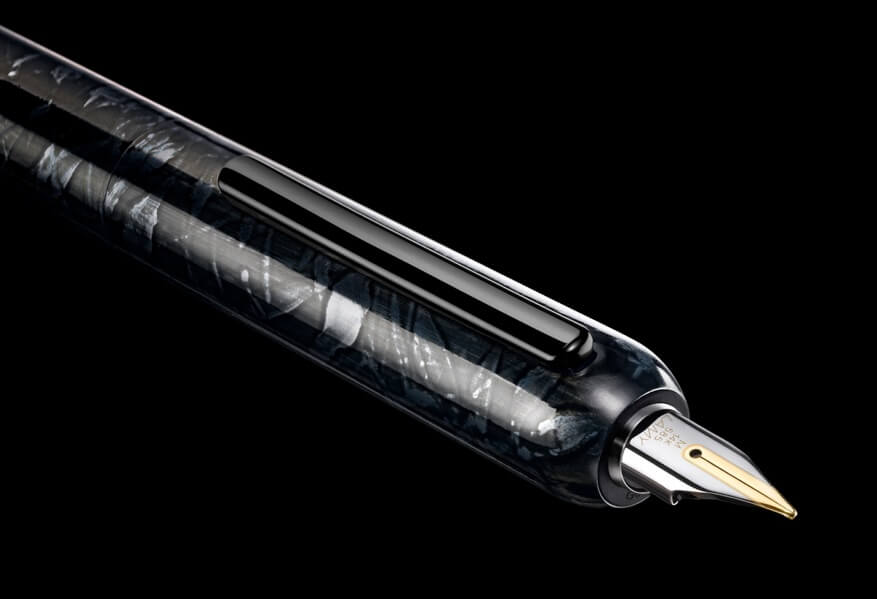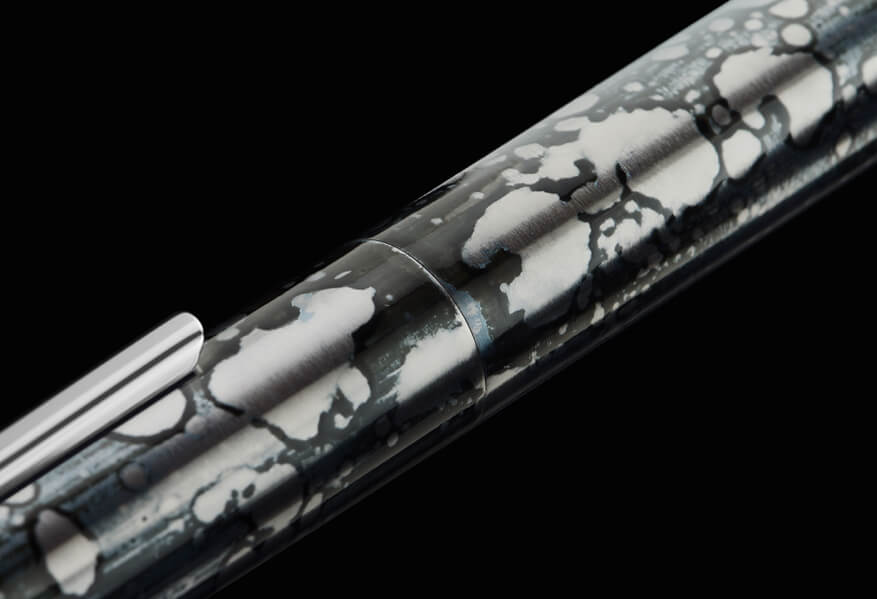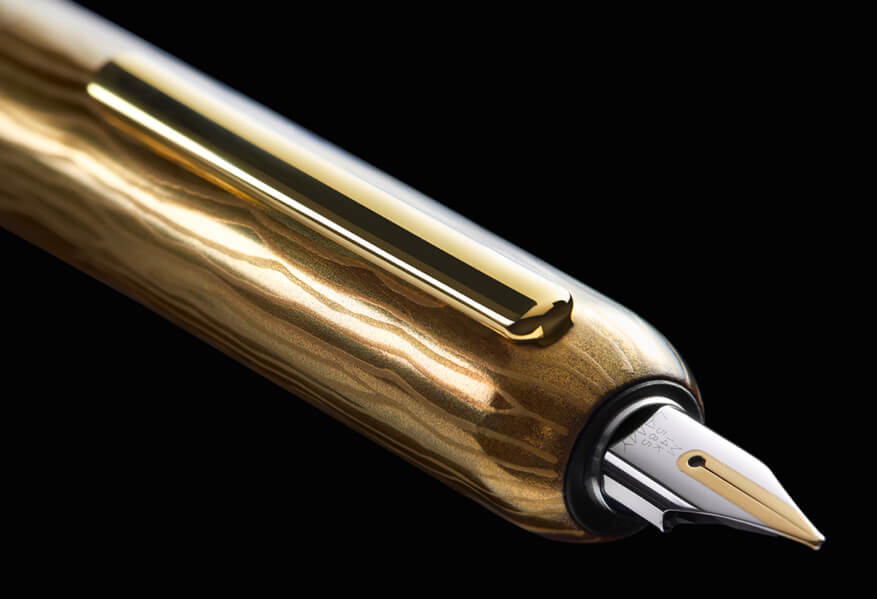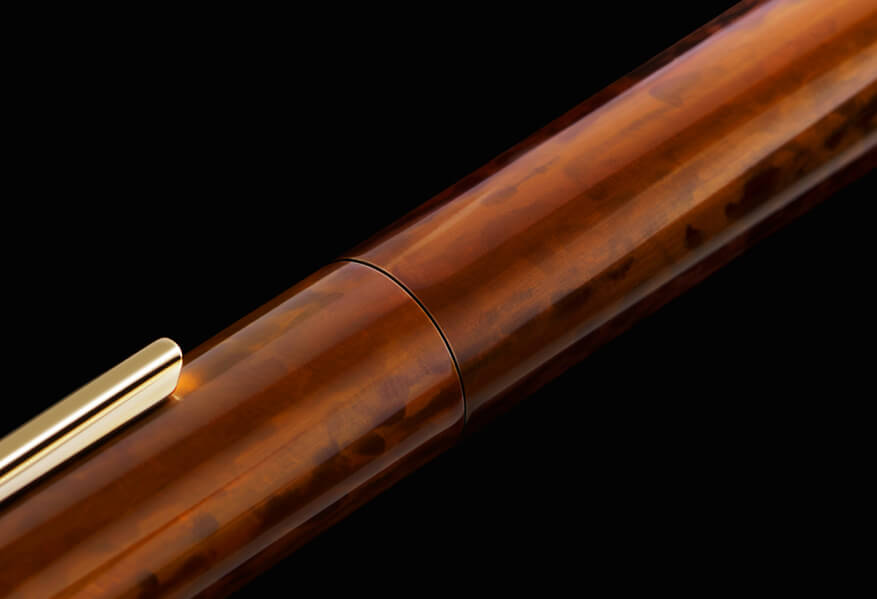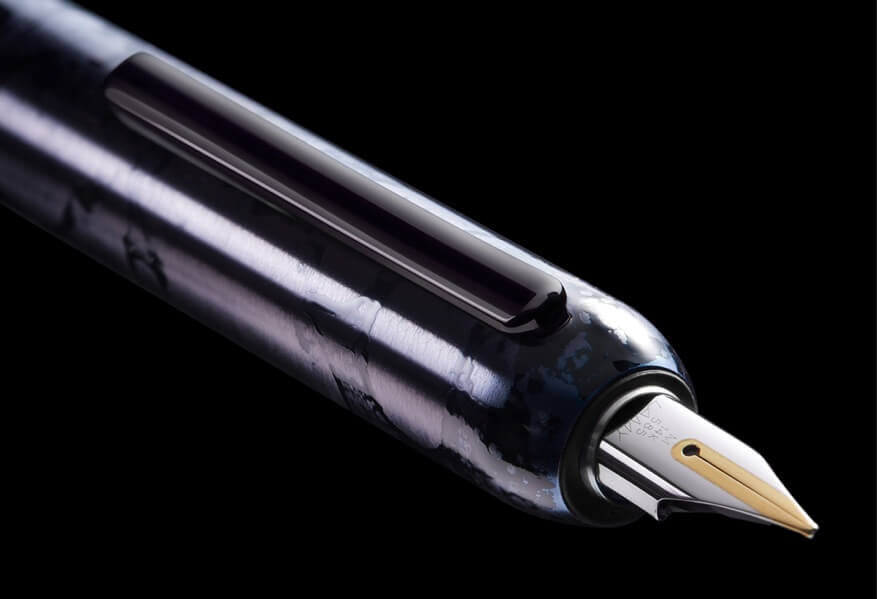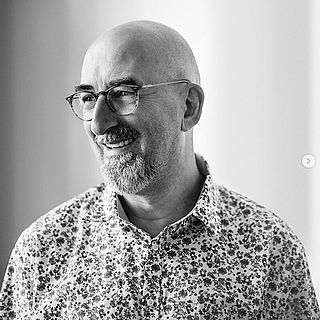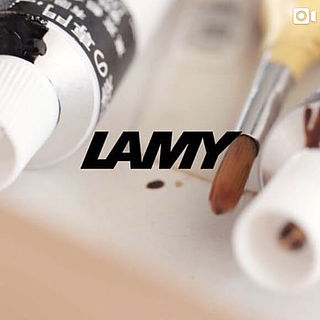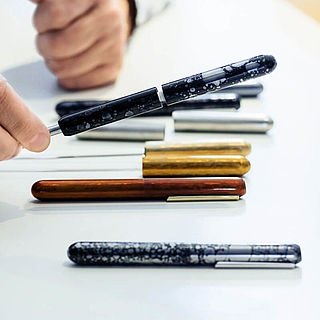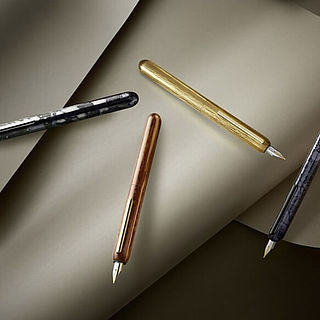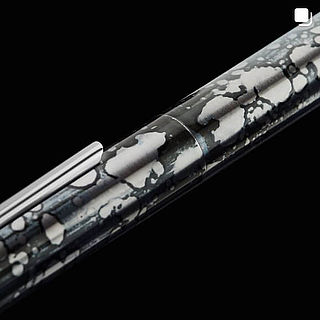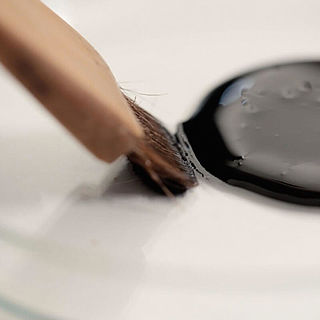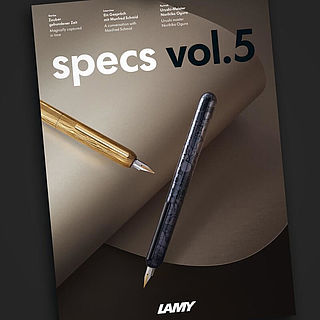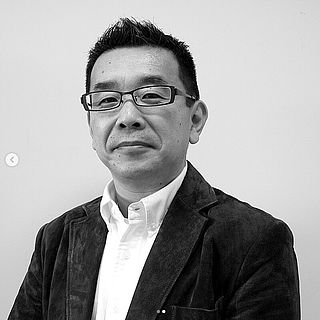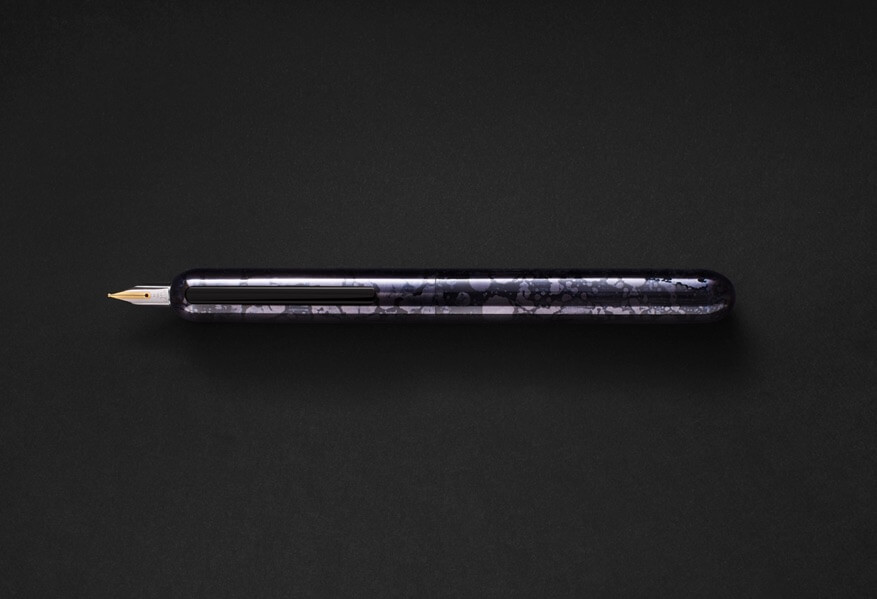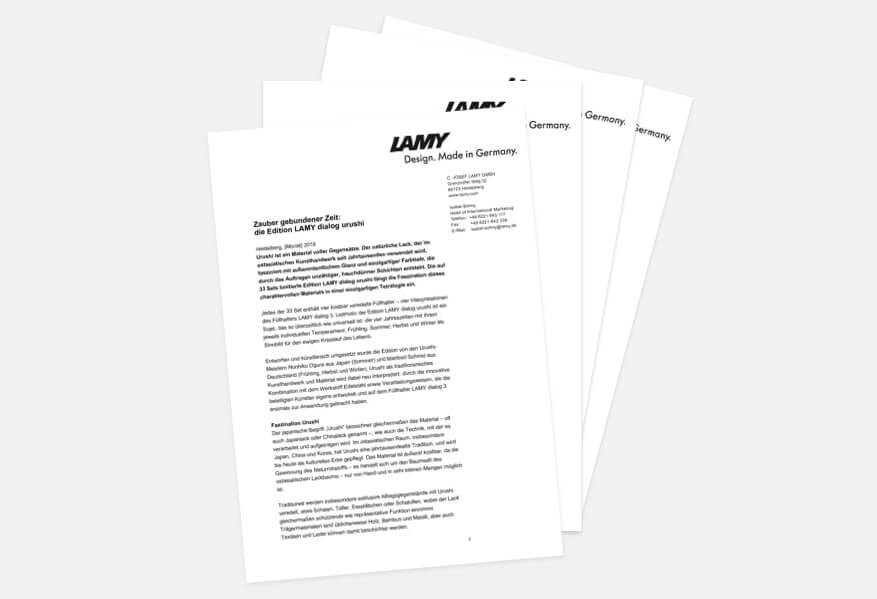Magically captured in time
Limited edition: LAMY dialog urushi
Urushi has been used in traditional Japanese arts and crafts for thousands of years. The quality of this natural material is unrivalled even today – thanks to its resistance, its intensity and its auratic beauty which instantly casts a spell over onlookers.
An extraordinary symbiosis. Tradition and modernity. Asia and Europe.
Its combination with contemporary materials and processes puts urushi into a whole new light. Virtuoso painting is used on a fountain pen whose form and function also feature masterful craftsmanship and technical excellence: LAMY dialog.
NEW 2021: LAMY dialog urushi leaves - limited to 20 unique pieces and only available on request.
The fascination of urushi
The Japanese term “urushi” describes the material – often also called Japanese lacquer or Chinese lacquer – as well as the technique with which it is processed and applied. Urushi has a millennia-old tradition in the East Asian region, in particular in Japan, China and Korea, and has been preserved as part of the countrys’ cultural heritage to the present day. This natural raw material – the sap of the east Asian lacquer tree – is exceptionally precious as its extraction is only possible by hand and in very small amounts.
Traditionally, exclusive daily objects, in particular, are finished with urushi, for example bowls, plates, chopsticks or caskets whereby the lacquer has a protective as well as representative role. It is usually applied to materials such as wood, bamboo and metal although it can also be applied to textiles and leather.
The application of the lacquer to an object often occurs over long periods of time, sometimes even years or across generations: several base layers are followed by many, very thin layers of lacquer of which each one has to harden and be polished. Once the lacquer has hardened, which is usually triggered by humidity, urushi is more or less “indestructible”. In Japanese mythology the material is therefore often also associated with immortality and regarded as an elixir of life.
The edition has been designed and artistically realised by urushi master Norihiko Ogura from Japan (summer) and Manfred Schmid from Germany (spring, autumn and winter). Hereby urushi is, as a traditional craft and material, reinterpreted: with an innovative combination with stainless steel as well as processing methods which the participating artists developed themselves and used for the first time with the LAMY dialog 3.
NEW 2021: LAMY dialog urushi leaves
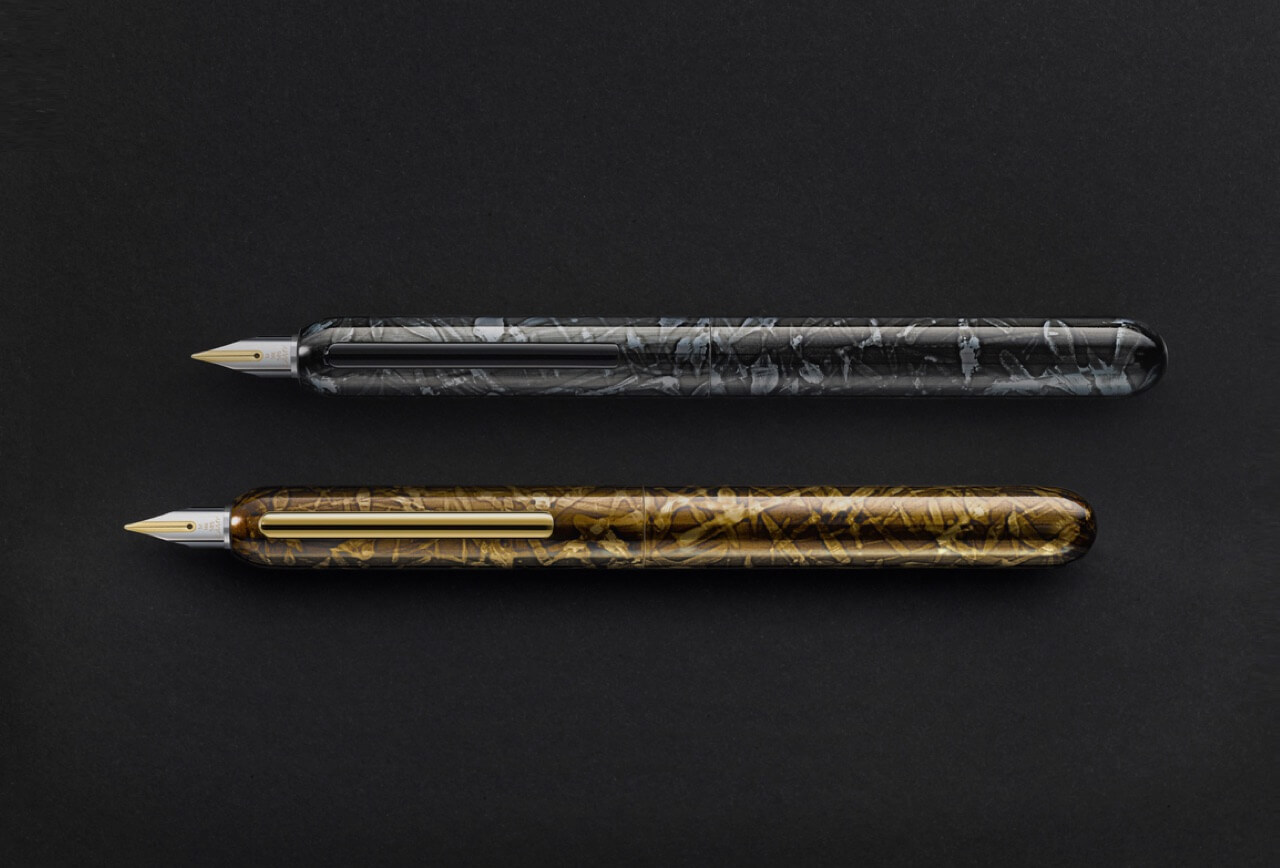
The designs of the mystic leaves and bright leaves models are based on the transformation of the visible structures of leaves onto the fountain pens using the properties of the urushi varnish. This transformation does not occur by simply painting the leaves on the surfaces of the fountain pens. The corresponding structures in the surface of the instruments are rather created through the specific properties of the varnish and special paintbrush techniques. At the same time, the nature of the varnish allows these structures to take on their own completely unique design.
The mystic leaves model has a blue layer of niobium which has been applied to the carefully pretreated stainless steel body components. In the bright leaves model, on the other hand, these components have been gold-plated using the PVD process. The initial layers of the urushi varnish are then applied. The structuring process is incorporated into the varnish using a paintbrush and pure alcohol. After drying, subsequent layers of the urushi varnish are applied and then polished. The mystic leaves model features a black PVD coating for its ball valve and clip, whereas these have been gold-plated in the bright leaves model.
LAMY dialog urushi bright leaves
Radiating warmth.
A symbiosis of soft shades and powerful gold.
Manfred Schmid, Germany
LAMY dialog urushi mystic leaves
Natural structures.
Mysterious blue shimmering in mystical depths.
Manfred Schmid, Germany
Dark, yet full of light. Opaque, yet extremely clear. Urushi is a material full of contrasts.
The LAMY dialog urushi edition – the four seasons
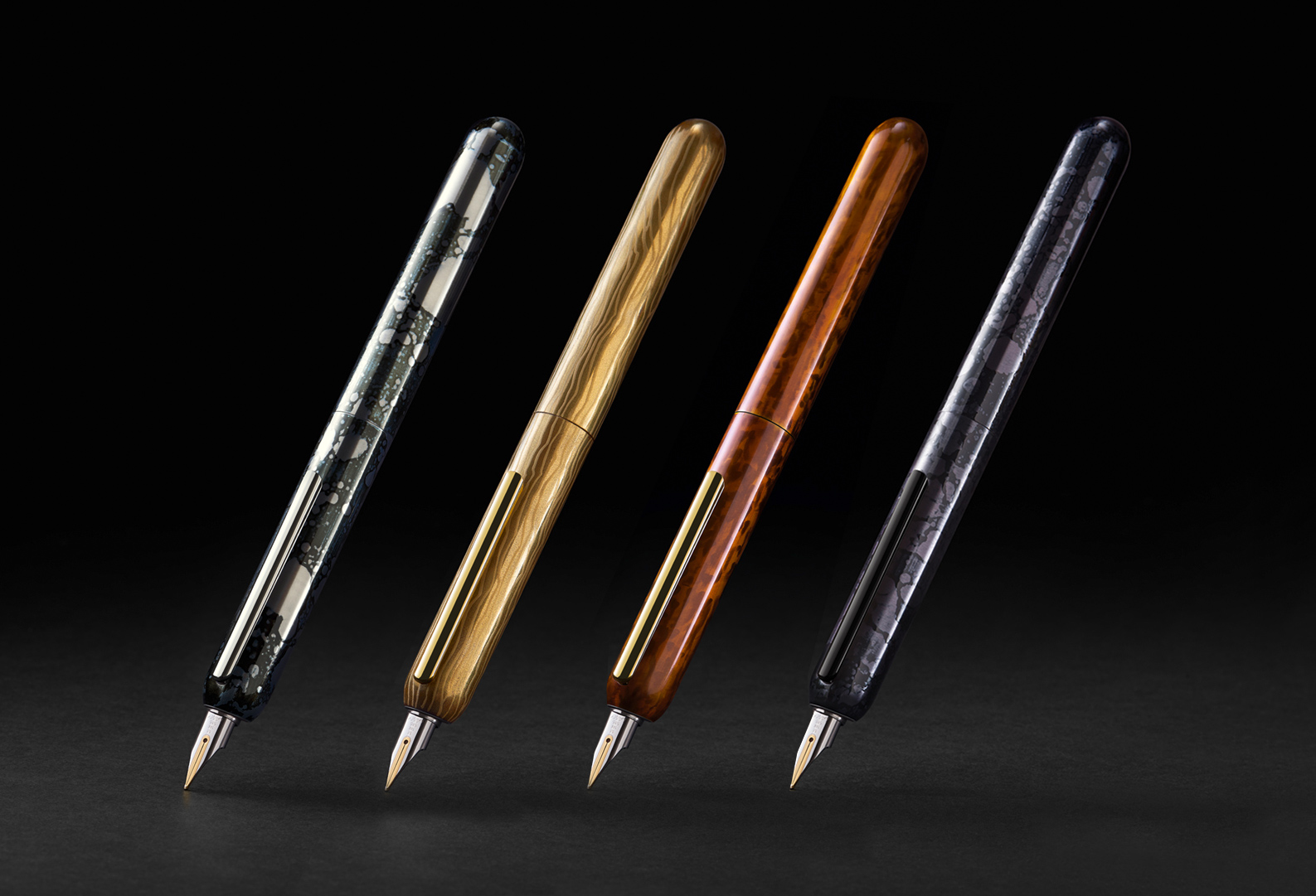
My fascination with urushi began with black lacquer. It creates the deepest black found anywhere in the world.
Spring
Stainless steel case with light blue niobium coating. Finished with black urushi lacquer, broken-up structure. Rhodium-plated ball valve and clip.
Manfred Schmid, Germany
Summer
Stainless steel body with golden PVD coating. Finished with urushi lacquer and gold powder sprinkled into it. Gold-plated ball valve and clip.
Norihiko Ogura, Japan
Autumn
Stainless steel body with golden PVD coating, smoothed with structure. Finished with several coats of transparent urushi lacquer. Gold-plated ball valve and clip.
Manfred Schmid, Deutschland
Winter
Stainless steel body with dark blue PVD coating. Finished with a black urushi lacquer, broken up structure. PVD-coated ball valve and clip, black.
Manfred Schmid, Deutschland
Black urushi lacquer creates the deepest black known worldwide. This is not created by pigments but through the addition of iron powder which causes an oxidation of the lacquer and is subsequently filtered out. Applied very thinly, the black lacquer appears transparent at first. It is only with the application of additional layers that the colour intensity and depth are created which are so characteristic of urushi surfaces.
For the spring model, urushi master Manfred Schmid hasn’t used the black lacquer in this classic way but, instead, developed a new and original technique. An ultra-thin layer of the black lacquer is applied to the stainless-steel body which is coated with light blue niobium and this blue then shimmers through the black lacquer. Using a fine brush, the artist then lightly sprinkles alcohol over the black lacquer which breaks up the surface and creates a complex structure full of subtle reflexes which are unique and cannot be repeated.
The summer model was designed by the Japanese master Norihiko Ogura with a special variant of the so-called gold sprinkling technique (Maki-e) whereby a special, super-fine grain gold powder (each grain has a diameter of 0.03 mm) is sprinkled over the entire lacquer surface. The surface is then smoothed with
charcoal made of camellia wood. A procedure which highlights the immense perfection and precision of the urushi master: when this is smoothed, the grains in the gold powder are reduced to exactly half their original size. The subsequent application and smoothing of a further layer of gold, the grains of which are slightly larger, creates a streamlined texture on the surface. In daily use these lines are “polished” through contact with the skin and become increasingly glossier. The lower lacquer layers also become visible and in this way the fountain pen is subject to a continuous living change process.
Manfred Schmid has also chosen his own urushi method for the autumn model. Whilst the lacquer is usually only used in the colours black and red, Manfred Schmid used the so-called transparent lacquer for this model. Typically, only used for sealing and not in the actual decor, this natural urushi lacquer gradually unfolds a warm amber shade with every layer. Manfred Schmid applies this to a stainless steel body with golden PVD coating which, prior to this, was smoothed vertically and horizontally to create a fine texture. This structure which has been created in this way later gleams from a depth through the lacquer and the base and surface fuse.
The finishing method of winter is the same as used in the “Spring” model.

I work in tune with the material. I hear and feel more than I see. I regard that internally as a way of penetrating the surface.
Manfred Schmid
The trained cabinet maker learnt and mastered the Japanese lacquer art at the Escola Massana and Escola Llotja in Barcelona from 1998 to 2004. In 2004, he returned to his home town of Bremen where he has since then been practicing his art and, in his studio, has further developed his work with the urushi technique. After decades of intense work with black lacquer, Manfred
Schmid today particularly seeks new, partly also experimental, ways of emphasising the special qualities of the material.
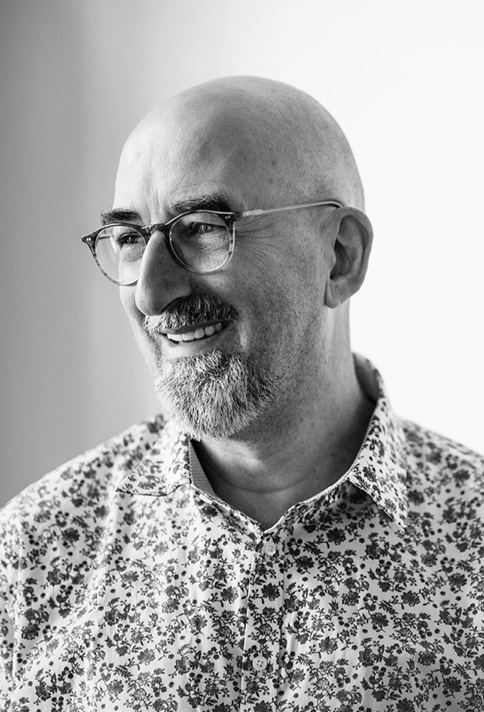
Multi-award-winning, the artistic works of Manfred Schmid have already been exhibited in numerous international exhibitions and included in public collections – for example the Dresden State Art Collections (Staatliche Kunstsammlungen Dresden), the Hamburg Museum of Fine, Applied and Decorative Arts, the Grassi Museum in Leipzig as well as the Münster Museum of Lacquer Art.
Norihiko Ogura
Norihiko Ogura is an urushi master and also the long-standing professor and director of the Institute for Lacquer Art at the Tokyo University of the Arts. He learnt the lacquer art as assistant of Yoshikuni Taguchi, a former apprentice of urushi master Gonroku Matsuda whose works were designated a part of Japan’s living cultural heritage in 1955.
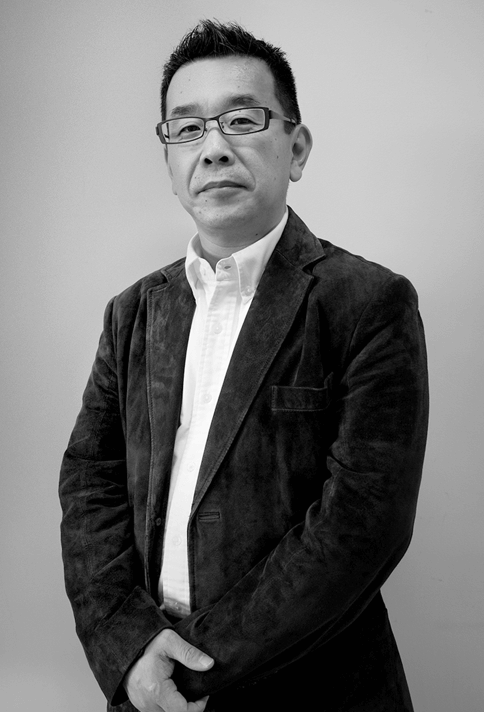
The lacquer works of Norihiko Ogura have won almost every renowned award – including the Purple Rose of the Japanese emperor which he received in 2011. His works have been exhibited in many international exhibitions and are part of the collections of numerous museums including the Victoria & Albert Museum, the National Museum Tokyo as well as the Argentina Museum for Modern Art.
